Volume 9-14 (2020-26)
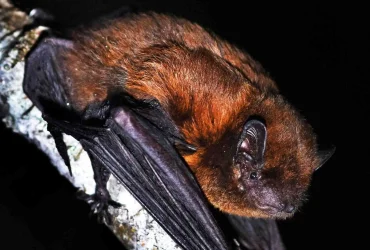 v9i2.237
v9i2.237ISSN: 1800-427X (printed)
eISSN: 1800-427X (online)
DOI:10.47605/tapro.v9i2.237
Submitted date: 9 July 2020
Accepted date: 10 October 2020
Published date: 28 November 2020
Pp. 225–226, Pl. 63.
On a bent-toed gecko (Cyrtodactylus sp.) from south-eastern Bali, Indonesia
Matthew Mo* & Elouise Mo
*Corresponding author. E-mail: matthew.sk.mo@gmail.com
The bent-toed gecko genus Cyrtodactylus is a highly diverse reptile genus, well represented across Southeast Asia, as well as the Indian subcontinent and Australia. Cyrtodactylus species are widely distributed throughout the Indonesian archipelago and recently a new species, C. jatnai was identified from West Bali. A previous herpetofaunal inventory of Bali only listed C. fumosus as the sole representative of the genus. More recently, determined that the name C. fumosus refers to a species endemic to Sulawesi and that records elsewhere represent misidentifications and the identity of records from Bali consequently clarified. A recent study of reptile assemblages in the Gianyar Regency (south-eastern Bali) reported the marbled bow-fingered gecko C. marmoratus, a species found in Java and assumed to occur in Bali. Following the recent description of C. jatnai, the only species of Cyrtodactylus so far confirmed to occur on Bali, detailed morphological study is required to determine whether C. marmoratus is genuinely present on the island.
Section Editor: Thasun Amarasinghe
eISSN: 1800-427X (online)
DOI:10.47605/tapro.v9i2.237
Submitted date: 9 July 2020
Accepted date: 10 October 2020
Published date: 28 November 2020
Pp. 225–226, Pl. 63.
On a bent-toed gecko (Cyrtodactylus sp.) from south-eastern Bali, Indonesia
Matthew Mo* & Elouise Mo
*Corresponding author. E-mail: matthew.sk.mo@gmail.com
The bent-toed gecko genus Cyrtodactylus is a highly diverse reptile genus, well represented across Southeast Asia, as well as the Indian subcontinent and Australia. Cyrtodactylus species are widely distributed throughout the Indonesian archipelago and recently a new species, C. jatnai was identified from West Bali. A previous herpetofaunal inventory of Bali only listed C. fumosus as the sole representative of the genus. More recently, determined that the name C. fumosus refers to a species endemic to Sulawesi and that records elsewhere represent misidentifications and the identity of records from Bali consequently clarified. A recent study of reptile assemblages in the Gianyar Regency (south-eastern Bali) reported the marbled bow-fingered gecko C. marmoratus, a species found in Java and assumed to occur in Bali. Following the recent description of C. jatnai, the only species of Cyrtodactylus so far confirmed to occur on Bali, detailed morphological study is required to determine whether C. marmoratus is genuinely present on the island.
Section Editor: Thasun Amarasinghe
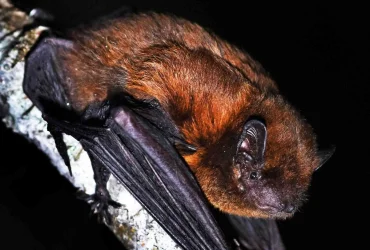 v9i2.236
v9i2.236ISSN: 1800-427X (printed)
eISSN: 1800-427X (online)
DOI:10.47605/tapro.v9i2.236
Submitted date: 13 September 2020
Accepted date: 31 October 2020
Published date: 28 November 2020
Pp. 222–224, Pls. 61–62.
Distribution of two endemic bufonids (Anura: Bufonidae) in the Western Ghats
S.R. Chandramouli*
*E-mail: findthesnakeman@gmail.com
The Anuran family Bufonidae Gray, 1825 is represented by four genera in peninsular India: Duttaphrynus; Xanthophryne; Ghatophryne; and Pedostibes. Of these, the three latter genera are endemic to the Western Ghats. These endemic bufonid genera are represented by two, two and one species respectively. Though the distribution patterns of these endemic toads have been documented in the past, precise published records are few. Reddy et al. (2002) reported a range extension of G. ornata from Kudremukh. The distribution of P. tuberculosus was mapped by Dinesh & Radhakrishnan (2008). Likewise, Subramanian et al. (2013) presented a point distribution map for G. ornata and G. rubigina. However, further precise distribution records of these endemic taxa are still in need of a proper appraisal. In this paper, I present point maps of the distributions of G. ornata and P. tuberculosus and reassess their conservation status based on the IUCN criteria.
Section Editor: Philip Bowles
eISSN: 1800-427X (online)
DOI:10.47605/tapro.v9i2.236
Submitted date: 13 September 2020
Accepted date: 31 October 2020
Published date: 28 November 2020
Pp. 222–224, Pls. 61–62.
Distribution of two endemic bufonids (Anura: Bufonidae) in the Western Ghats
S.R. Chandramouli*
*E-mail: findthesnakeman@gmail.com
The Anuran family Bufonidae Gray, 1825 is represented by four genera in peninsular India: Duttaphrynus; Xanthophryne; Ghatophryne; and Pedostibes. Of these, the three latter genera are endemic to the Western Ghats. These endemic bufonid genera are represented by two, two and one species respectively. Though the distribution patterns of these endemic toads have been documented in the past, precise published records are few. Reddy et al. (2002) reported a range extension of G. ornata from Kudremukh. The distribution of P. tuberculosus was mapped by Dinesh & Radhakrishnan (2008). Likewise, Subramanian et al. (2013) presented a point distribution map for G. ornata and G. rubigina. However, further precise distribution records of these endemic taxa are still in need of a proper appraisal. In this paper, I present point maps of the distributions of G. ornata and P. tuberculosus and reassess their conservation status based on the IUCN criteria.
Section Editor: Philip Bowles
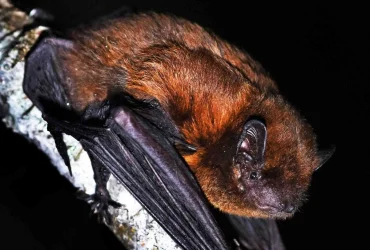 v9i2.235
v9i2.235ISSN: 1800-427X (printed)
eISSN: 1800-427X (online)
DOI:10.47605/tapro.v9i2.235
Submitted date: 25 June 2020
Accepted date: 31 October 2020
Published date: 28 November 2020
Pp. 220–221, Pl. 60.
Limnonectes macrodon (Duméril & Bibron, 1841) from Bali, Indonesia
Petr Sramek & Ruchira Somaweera*
*Corresponding author. E-mail: ruchira.somaweera@gmail.com
The Giant Javan Frog, Limnonectes macrodon (Duméril & Bibron, 1841), is a large dicroglossid with adult males reaching up to 15 cm SVL. This species was previously thought to be widespread in Southeast Asia, but taxonomic studies have spilt the taxon into multiple species, with L. macrodon now considered to be restricted to Java and to Lampung province in South Sumatra. Accordingly, numerous records from elsewhere are now considered either to belong to other taxa or need further verification. For example, those records from the Malay Peninsula and from the mainland of Southeast Asia are now referrable to L. blythii, whereas those from Borneo are referrable to L. ingeri. The record from Sikkim in northeastern India is almost certainly in error, whereas another record for Manipur in northeastern India is yet to be verified. Similarly, those from New Guinea also need further investigation and a record from the Andaman Islands in India likely belongs to an as yet undescribed species.
Section Editor: Thasun Amarasinghe
eISSN: 1800-427X (online)
DOI:10.47605/tapro.v9i2.235
Submitted date: 25 June 2020
Accepted date: 31 October 2020
Published date: 28 November 2020
Pp. 220–221, Pl. 60.
Limnonectes macrodon (Duméril & Bibron, 1841) from Bali, Indonesia
Petr Sramek & Ruchira Somaweera*
*Corresponding author. E-mail: ruchira.somaweera@gmail.com
The Giant Javan Frog, Limnonectes macrodon (Duméril & Bibron, 1841), is a large dicroglossid with adult males reaching up to 15 cm SVL. This species was previously thought to be widespread in Southeast Asia, but taxonomic studies have spilt the taxon into multiple species, with L. macrodon now considered to be restricted to Java and to Lampung province in South Sumatra. Accordingly, numerous records from elsewhere are now considered either to belong to other taxa or need further verification. For example, those records from the Malay Peninsula and from the mainland of Southeast Asia are now referrable to L. blythii, whereas those from Borneo are referrable to L. ingeri. The record from Sikkim in northeastern India is almost certainly in error, whereas another record for Manipur in northeastern India is yet to be verified. Similarly, those from New Guinea also need further investigation and a record from the Andaman Islands in India likely belongs to an as yet undescribed species.
Section Editor: Thasun Amarasinghe
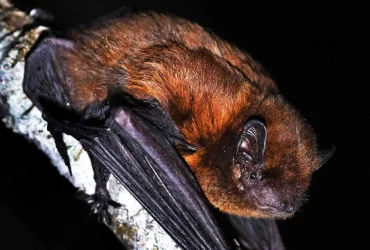 v9i2.234
v9i2.234ISSN: 1800-427X (printed)
eISSN: 1800-427X (online)
DOI:10.47605/tapro.v9i2.234
Submitted date: 25 June 2020
Accepted date: 05 October 2020
Published date: 28 November 2020
Pp. 217–219, Pls. 58–59.
Range extension of a globally endangered Martenstyn’s barb, Systomus martenstyni
O.W. Kotagama, S. de A. Goonatilake*, W.P.N. Perera & D.K. Weerakoon
*Corresponding author. E-mail: sampath.goonatilake@iucn.org
Sri Lanka is endowed with a rich network of rivers that dissects the island into 103 river basins. Mahaweli River, 332 km long, is the largest of these basins, covering 10,327 km2, approximately one-sixth of the island’s land area. Mahaweli River passes through three bioclimatic zones and therefore comprises a cross-section of almost all the natural ecosystems present in Sri Lanka other than tropical rainforest. Further, the river basin is inhabited by a diverse species assemblage including a number of endemic plants, fish, frogs, reptiles and mammals that are restricted to this river basin. Martenstyn’s Barb Systomus martenstyni (Sinhala name: Dumbara Pethia) is one such endemic freshwater fish species restricted to the Mahaweli Basin.
Section Editor: Sujan Henkanaththegedara
eISSN: 1800-427X (online)
DOI:10.47605/tapro.v9i2.234
Submitted date: 25 June 2020
Accepted date: 05 October 2020
Published date: 28 November 2020
Pp. 217–219, Pls. 58–59.
Range extension of a globally endangered Martenstyn’s barb, Systomus martenstyni
O.W. Kotagama, S. de A. Goonatilake*, W.P.N. Perera & D.K. Weerakoon
*Corresponding author. E-mail: sampath.goonatilake@iucn.org
Sri Lanka is endowed with a rich network of rivers that dissects the island into 103 river basins. Mahaweli River, 332 km long, is the largest of these basins, covering 10,327 km2, approximately one-sixth of the island’s land area. Mahaweli River passes through three bioclimatic zones and therefore comprises a cross-section of almost all the natural ecosystems present in Sri Lanka other than tropical rainforest. Further, the river basin is inhabited by a diverse species assemblage including a number of endemic plants, fish, frogs, reptiles and mammals that are restricted to this river basin. Martenstyn’s Barb Systomus martenstyni (Sinhala name: Dumbara Pethia) is one such endemic freshwater fish species restricted to the Mahaweli Basin.
Section Editor: Sujan Henkanaththegedara
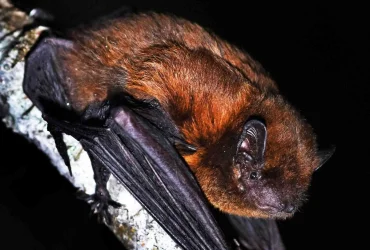 v9i2.233
v9i2.233ISSN: 1800-427X (printed)
eISSN: 1800-427X (online)
DOI:10.47605/tapro.v9i2.233
Submitted date: 8 July 2020
Accepted date: 16 November 2020
Published date: 28 November 2020
Pp. 210–216.
AN OVERVIEW OF THE HUMAN–ELEPHANT CONFLICT IN TISSAMAHARAMAYA, HAMBANTOTA DISTRICT, SRI LANKA
M.C.A. Galappaththi, T.S.P. Fernando & U.K.G.K. Padmalal
*Corresponding author. E-mail: mcagalappaththi@gmail.com
Abstract
Human–elephant conflict (HEC) is a major problem to Tissmaharama Divisional Secretariat (TDS) in Hambantota District, Sri Lanka. The current study was designed to identify and describe the patterns of HEC in TDS so that methods could be developed to minimise human and elephant deaths due to HEC. The data were collected through questionnaire surveys and internal data of the Department of Wildlife Conservation and the Meteorological Department of Sri Lanka. The results suggest that elephants feed on all cereals, fruits and vegetables available except citrus, pomegranate, sesame and bitter gourd. The majority of conflicts were caused by elephant groups of less than four individuals (94.3%). Elephant raids occurred mainly during the night and especially escalate towards January and September. There were no correlations between rainfall and crop damage. Both human and elephant males were more likely to die from HEC than human and elephant females.
Key words : crop and property damage, human–elephant deaths, rain fall, wildlife management
Section Editor: Lee Harding
eISSN: 1800-427X (online)
DOI:10.47605/tapro.v9i2.233
Submitted date: 8 July 2020
Accepted date: 16 November 2020
Published date: 28 November 2020
Pp. 210–216.
AN OVERVIEW OF THE HUMAN–ELEPHANT CONFLICT IN TISSAMAHARAMAYA, HAMBANTOTA DISTRICT, SRI LANKA
M.C.A. Galappaththi, T.S.P. Fernando & U.K.G.K. Padmalal
*Corresponding author. E-mail: mcagalappaththi@gmail.com
Abstract
Human–elephant conflict (HEC) is a major problem to Tissmaharama Divisional Secretariat (TDS) in Hambantota District, Sri Lanka. The current study was designed to identify and describe the patterns of HEC in TDS so that methods could be developed to minimise human and elephant deaths due to HEC. The data were collected through questionnaire surveys and internal data of the Department of Wildlife Conservation and the Meteorological Department of Sri Lanka. The results suggest that elephants feed on all cereals, fruits and vegetables available except citrus, pomegranate, sesame and bitter gourd. The majority of conflicts were caused by elephant groups of less than four individuals (94.3%). Elephant raids occurred mainly during the night and especially escalate towards January and September. There were no correlations between rainfall and crop damage. Both human and elephant males were more likely to die from HEC than human and elephant females.
Key words : crop and property damage, human–elephant deaths, rain fall, wildlife management
Section Editor: Lee Harding
Hubungi Kami
The ultimate aim of the journal is to provide an effective medium for communication of the latest and best scientific information.
Copyright © 2020 Taprobanica. All Rights Reserved
Jasa Pembuatan Website by IKT




